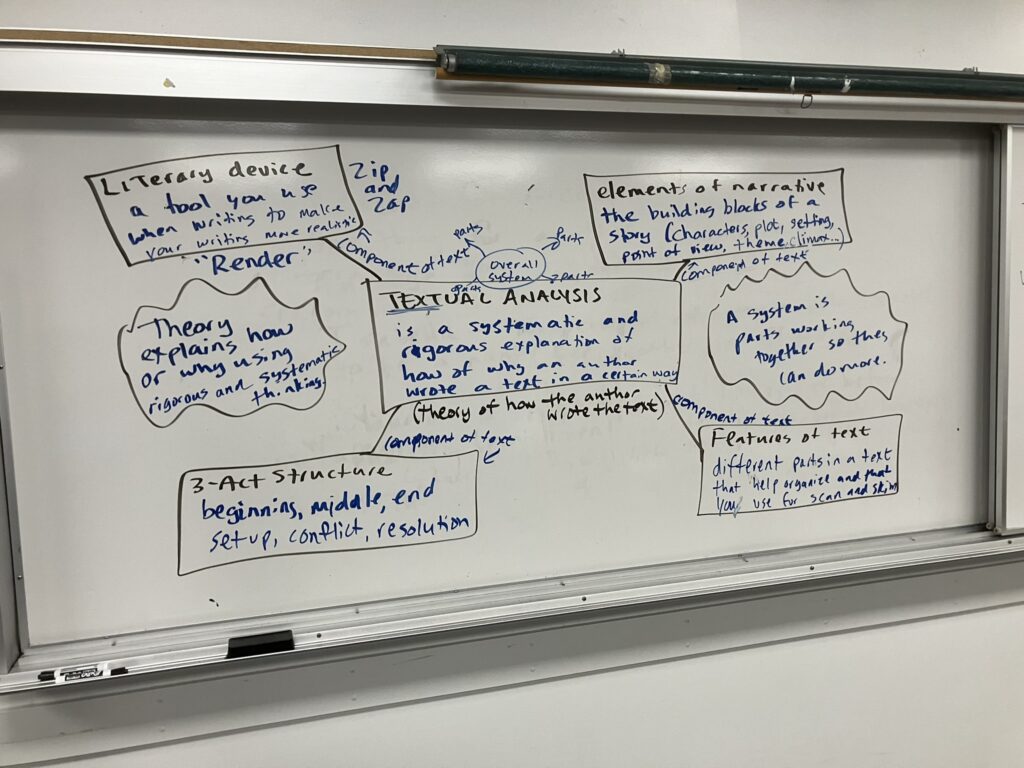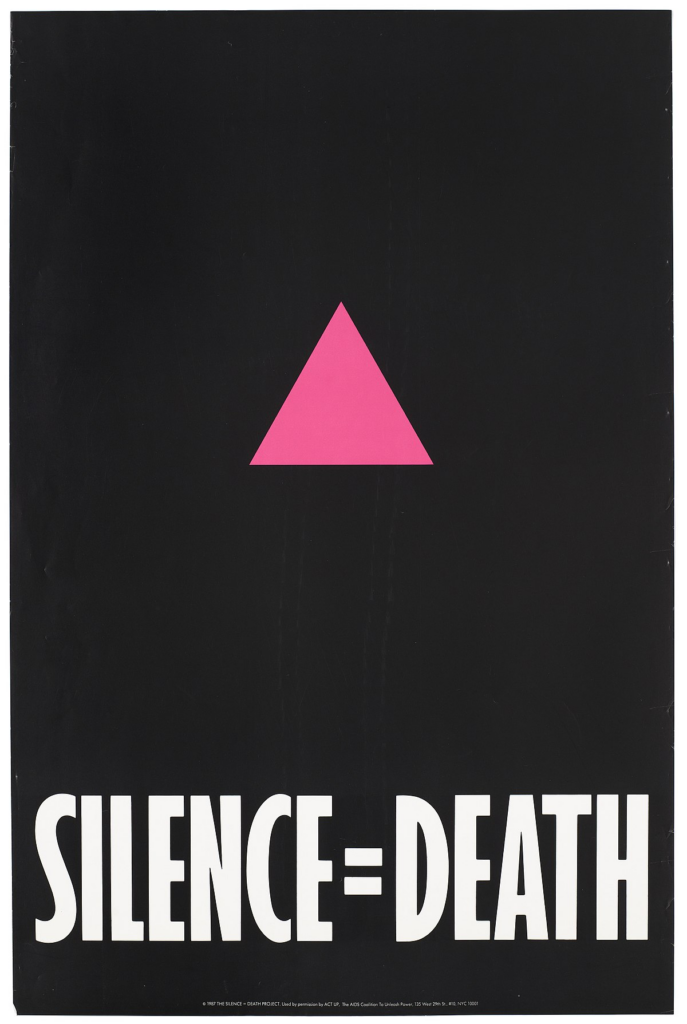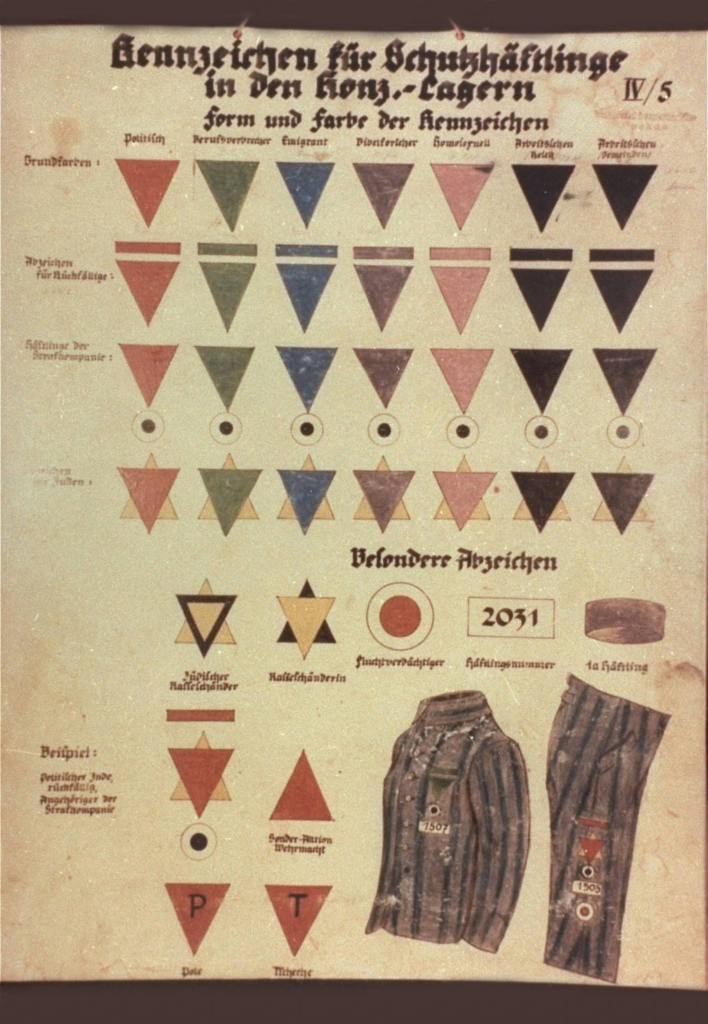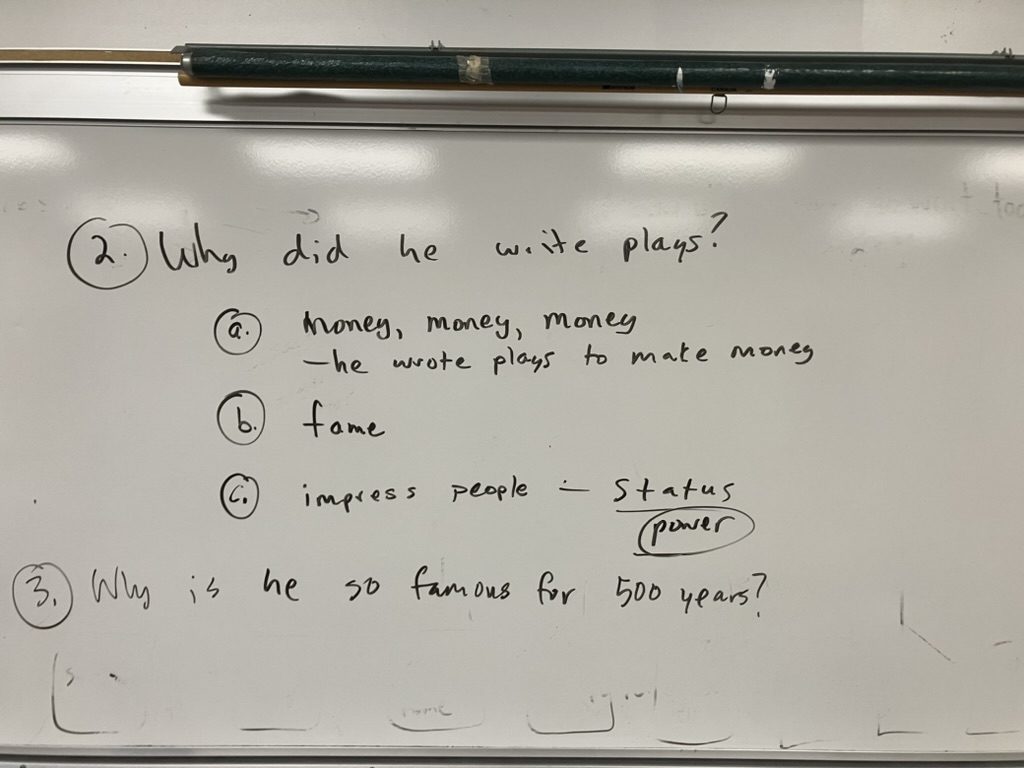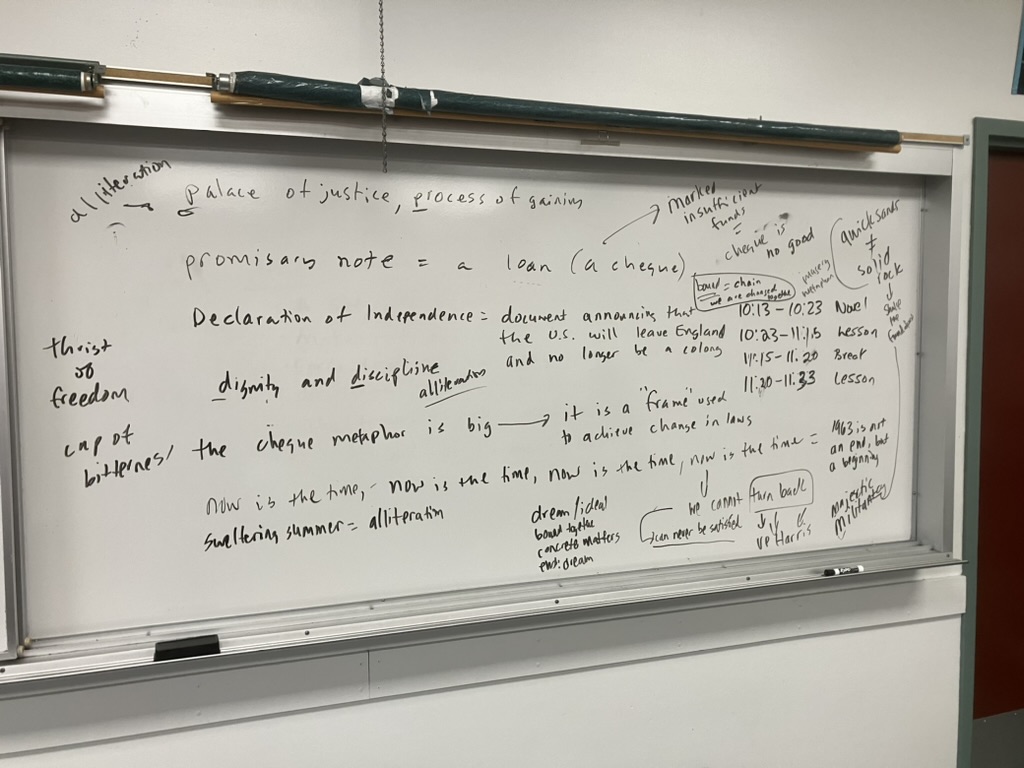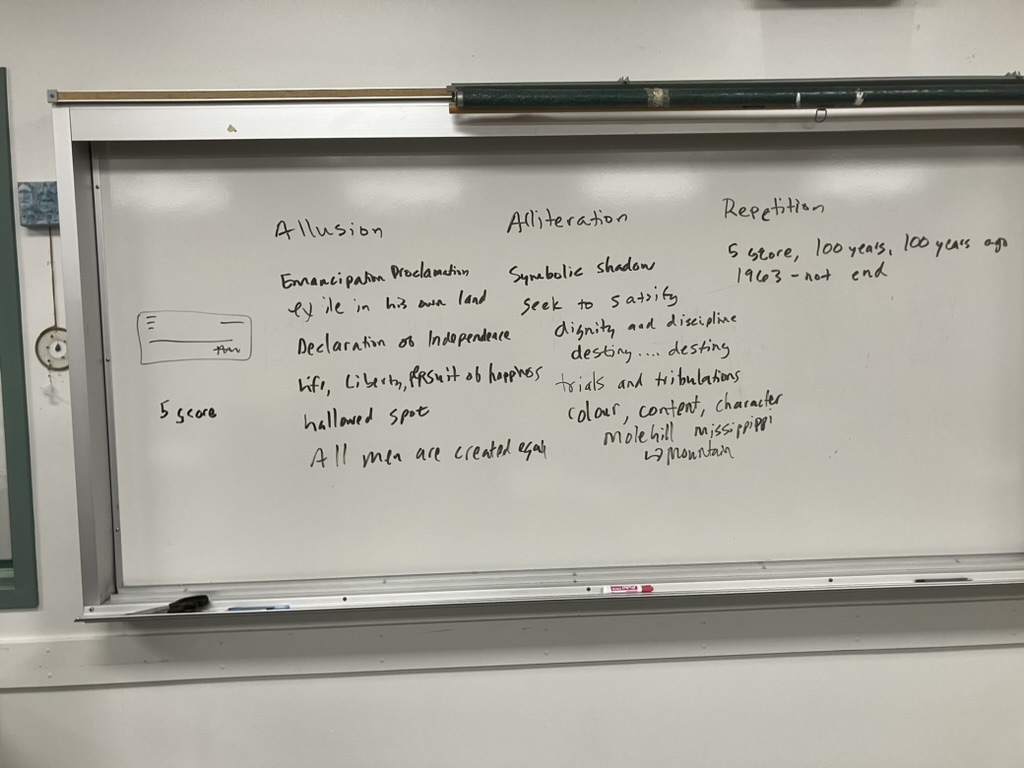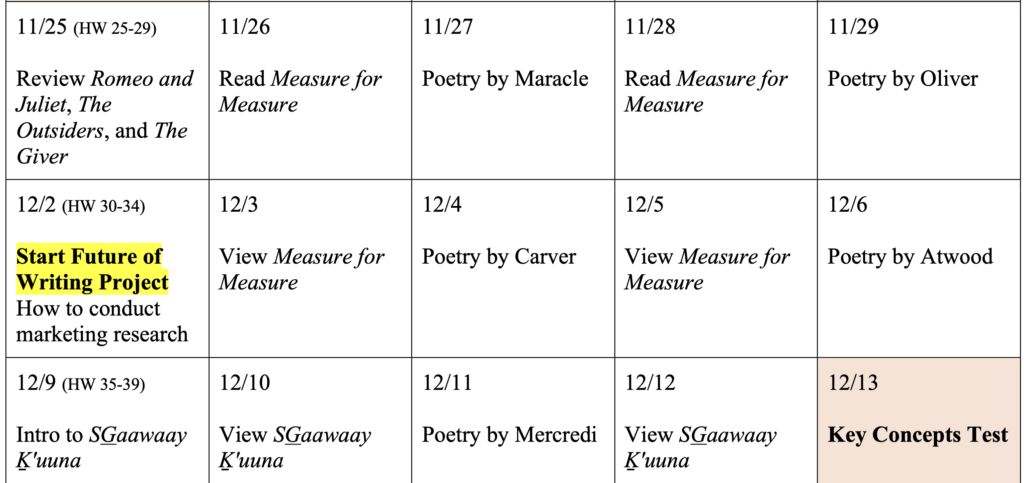
Plan to have work days on (to work on Essay 2, which is due Dec. 20):
- 11/15, 11/27, 11/29, 12/4, 12/6, and 12/11
- Read R&J, The Outsiders, or The Giver
- Prepare, Plan, Draft, Revise, and Edit Essay 2

Plan to read and view plays and films to prepare for the final exam:
- 11/26 or 11/28 (listen to Measure for Measure)
- 12/3 or 12/15 (view Measure for Measure)
- 12/9 and 12/10 or 12/12 (prepare/view SGaawaay K‘uuna)
On 12/2 plan to briefly start the Future of Writing Project. Once this is done, plan to correct Key Concepts Test from attempt 2. You will work on the longer questions on 12/2 for Key Concepts. You will also copy your correct answers onto a short version of the test, which is what you will use for 12/13.
The Key Concepts test is on 12/13. This will be a short version of the test. You will prepare for this on 12/2.


The week before Winter Break is a busy week. We will complete Quiz 7 and Learning Story Test 2. Essay 2 is due on 12/20. Thursday 12/19 is Gym Riot Day. Expect a reduction of instructional time. This will be made up on 12/16 (meaning that period 2 and 4 will start the learning story test on 12/16 and will also do quiz 7 on 12/16).


Friday 12/20 has some other holiday traditions. Essay 2 is due on 12/20. If you are not finished, expect to be required to work that day to finish. If you are finished, and you want to do other activities that day, ask for permission and if all caught up and what you want to do is okay to do (allowed by the school and/or other teachers) I will likely sign off on it. (Meaning, I will sign a hall pass or permission slip.) 12/20 is a work day. Get your work done, and there is no more work and therefore you may have free time.
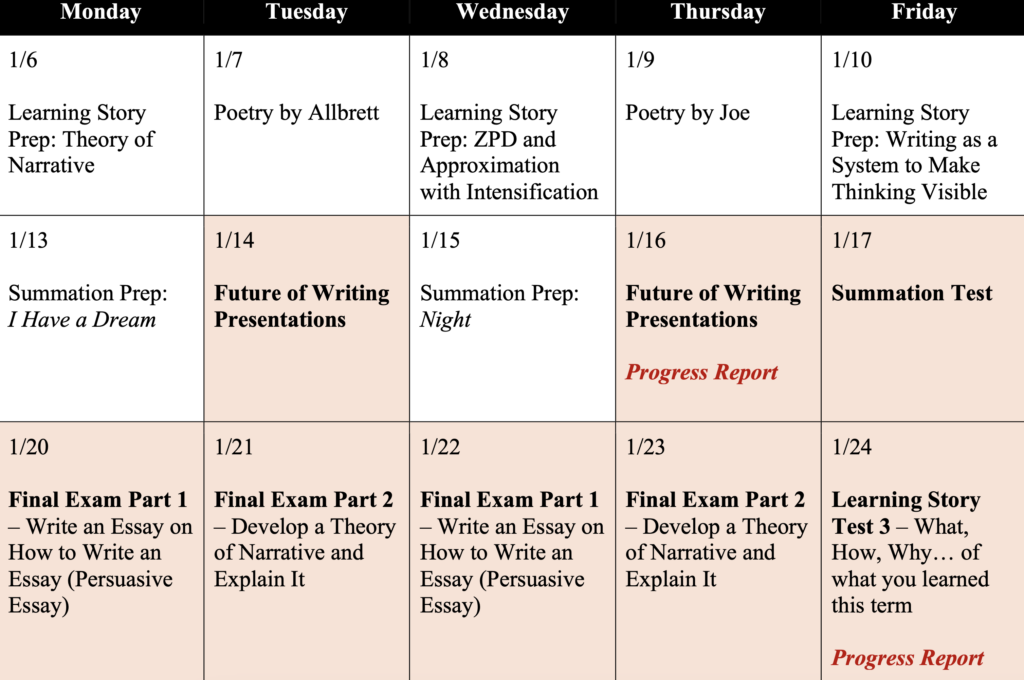
When you come back from break, plan to focus on the Future of Writing Presentation and the Final Exams. You will:
- Present on the future of writing
- Complete the summation test
- Do part 1 and part 2 of the Final Exam
- Complete Learning Story Part 3

The future of writing assignment may be excused if you are late on Essay 2 or have other make up work. The most you can earn for the term grade if you miss doing the future of writing presentation is Emerging. Everyone is expected to at least watch the presentations.

Essay 2 and the summation test, final exam, and learning story part 3 are all required. Most assessment is based on these tests and assignments. (Learning story 2 and key concepts are also required.)










